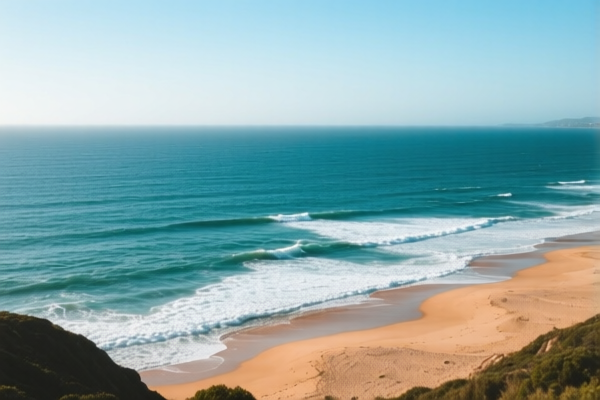| HS Code | Official Doc | Tariff Rate | Origin | Destination | Effective Date |
|---|---|---|---|---|---|
| 9617006000 | Doc | 37.2% | CN | US | 2025-05-12 |
| 9617001000 | Doc | 37.2% | CN | US | 2025-05-12 |
| 3307900000 | Doc | 60.4% | CN | US | 2025-05-12 |
| 3304995000 | Doc | 55.0% | CN | US | 2025-05-12 |
| 3304991000 | Doc | 55.0% | CN | US | 2025-05-12 |
| 6506996000 | Doc | 63.5% | CN | US | 2025-05-12 |
| 6506993000 | Doc | 58.3% | CN | US | 2025-05-12 |




Outdoor Emergency Kit
An outdoor emergency kit is a portable collection of supplies designed to help individuals or groups survive unexpected situations in a wilderness or remote environment. These kits aim to address basic survival needs when faced with injuries, inclement weather, or becoming lost.
Materials & Common Contents
Kits typically contain items categorized by function. Common materials and contents include:
- Shelter: Emergency blanket, bivy sack, tarp, or lightweight tent. These provide protection from the elements.
- Fire Starting: Waterproof matches, lighter, fire starter cubes, or ferrocerium rod. Essential for warmth, signaling, and water purification.
- First Aid: Comprehensive first aid kit including bandages, antiseptic wipes, pain relievers, blister treatment, gauze, medical tape, and potentially specialized items like tourniquets or splints.
- Navigation: Map (of the area), compass, GPS device, or signaling mirror. Aids in determining location and signaling for help.
- Food & Water: High-calorie food bars, water purification tablets or filter, water bottle or hydration reservoir. Sustains energy and prevents dehydration.
- Illumination: Headlamp or flashlight with extra batteries. Provides visibility in darkness.
- Signaling: Whistle, signal flares, reflective signaling mirror. Increases chances of rescue.
- Repair & Tools: Multi-tool, duct tape, knife, cordage (paracord). Enables repairs and building improvised shelters.
- Insulation: Extra clothing layers (hat, gloves, socks), hand warmers. Prevents hypothermia.
- Sun Protection: Sunscreen, sunglasses, hat. Prevents sunburn and heat exhaustion.
- Communication: Two-way radio, satellite communicator (optional). Allows communication with others.
Purpose & Function
The primary purpose of an outdoor emergency kit is to increase survivability in emergency situations. Kits function by:
- Addressing immediate needs: Providing tools to treat injuries, find shelter, and obtain food and water.
- Preventing escalation: Helping to stabilize a situation before help arrives.
- Facilitating rescue: Enabling individuals to signal for help and navigate towards safety.
Usage Scenarios
These kits are applicable in a wide range of outdoor activities, including:
- Hiking & Backpacking: Essential for multi-day trips and remote areas.
- Camping: Provides preparedness for unexpected weather or injuries.
- Climbing & Mountaineering: Addresses specialized risks associated with these activities.
- Boating & Kayaking: Provides preparedness for capsizing or becoming stranded.
- Road Trips in Remote Areas: Provides preparedness for vehicle breakdowns or getting lost.
- Natural Disasters: Useful for short-term survival following earthquakes, floods, or wildfires.
Common Types
Kits are categorized by size, content, and intended user:
- Individual Kits: Designed for one person, typically lightweight and compact.
- Group Kits: Larger kits designed for multiple people, containing more supplies.
- Specialized Kits: Tailored to specific activities or environments (e.g., winter survival kits, marine survival kits).
- Pre-assembled Kits: Commercially available kits with a pre-defined set of supplies.
- Custom Kits: Kits assembled by individuals based on their specific needs and skills.
- Ultralight Kits: Minimalist kits focused on reducing weight for fast-paced activities.
An outdoor emergency kit typically contains items for first aid, shelter, signaling, and basic survival in unforeseen circumstances. The specific classification depends on the kit's contents. Based on the provided information, the following HS codes may be relevant:
- 9617006000: Vacuum flasks and other vacuum vessels, complete; parts thereof other than glass inners: Parts. This code could apply if the kit includes a vacuum flask for temperature-sensitive items. The basic tariff is 7.2%, with no additional tariff currently, but a 30% additional tariff will apply after April 2, 2025, resulting in a total tariff of 37.2%.
- 3307900000: Pre-shave, shaving or after-shave preparations, personal deodorants, bath preparations, depilatories and other perfumery, cosmetic or toilet preparations, not elsewhere specified or included; prepared room deodorizers, whether or not perfumed or having disinfectant properties: Other. If the kit contains items like antiseptic wipes, hand sanitizers, or insect repellent, this code may be applicable. The basic tariff is 5.4%, with an additional tariff of 25.0%, increasing to 30.0% after April 2, 2025, for a total tariff of 60.4%.
- 3304995000: Beauty or make-up preparations and preparations for the care of the skin (other than medicaments), including sunscreen or sun tan preparations; manicure or pedicure preparations: Other: Other: Other. This code could apply if the kit includes items like lip balm, sunscreen, or aloe vera gel for skin protection. The basic tariff is 0.0%, with an additional tariff of 25.0%, increasing to 30.0% after April 2, 2025, for a total tariff of 55.0%.
- 6506996000: Other headgear, whether or not lined or trimmed: Other: Of other materials: Other. If the kit includes a hat or head covering for protection from the elements, this code may be relevant. The basic tariff is 8.5%, with an additional tariff of 25.0%, increasing to 30.0% after April 2, 2025, for a total tariff of 63.5%.
It is important to note that the final classification will depend on the specific contents of the kit. If the kit contains multiple types of items, it may be necessary to classify each item separately.
Customer Reviews
No reviews yet.